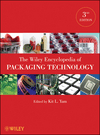Technology: Inks & Pigments
Polyurethane Ink Resins: Technology for the Future of Flexible Packaging






The major end-use application for flexible packaging is food packaging, which comprises more than half of the entire segment. This can only be expected to rise as more food categories and brand owners currently employing glass, metal or rigid plastics transition to the flexible packaging format.
While the benefits of flexible packaging compared to other formats are well documented, one often overlooked area is the resins that go into the inks. Not only do they make the graphics and packaging more attractive, they also provide functional benefits.
There are many different types of resins that go into inks used for printing on flexible packaging – styrene acrylics, polyurethanes, polyamides, nitrocellulose, etc. However, strong growth in categories such as snack foods, pre-cooked meals, meat, cheese and poultry necessitate multi-laminate packaging structures. Such packaging incorporates reverse printing on the outer layer of packaging and laminating to an internal layer. The unique requirements and challenges of such packaging bring polyurethane resin-based ink systems to the forefront.
While polyurethane resins (PURs) create a flexible film and provide superior lamination bond strengths that prevent delamination of the packaging, they are not as effective as other resins when it comes to pigment dispersion and also tend to be harder to print with. For this reason, PURs tend to require a co-resin to help improve the pigment dispersion.
With strong growth in food categories that require laminated packages, PURs will be required to disperse pigments more efficiently, print better, and keep costs and complexity down. With retort packaging (employed in the case of thermally-processed food) poised for growth, there is a need for high bond strengths under challenging conditions. Furthermore, addition of nitrocellulose is not recommended due to the formation of nitrosamines caused by the exposure of it in the packaging to high temperatures.
As a printer or converter, one needs to carefully consider the ink being used in such packaging applications. Not all PURs are similar in performance. Ink formulators incorporate specific PURs in their formulations to impart specific performance characteristics to the ink. For instance, when considering a PUR for retort or high-end lamination packaging applications, consideration should be given to the required bond strengths and ability to grind pigment without nitrocellulose. Another important consideration, and this is mostly true regardless of the packaging application, is the printability of the PUR-based ink. Sometimes tradeoffs between bond strengths and printability do need to be made. See Figure 1 for an illustration of the performance characteristics of three PURs currently on the market for high-performance and retort packaging applications.
The requirements for PURs are different in less demanding medium-performance packaging applications such as confectionery and condiments, or even standard performance lamination packaging applications such as snack bags. The prime considerations for a PUR are compatibility with nitrocellulose, bond strengths and cost of the resin. Compatibility with nitrocellulose is key because of its widespread use. It has great pigment grinding ability and is widely used, but it doesn’t have the flexibility and adhesion of PURs. Oftentimes, these PURs are also used for surface print applications where they are required to provide resistance properties and adhesion to the substrate. Figure 2 illustrates the performance of three different PURs available for medium and standard performance flexible packaging applications.
Regardless of the packaging application, when it comes to white inks, the ability to achieve maximum opacity and bond strengths is crucial. The addition of other resins can lower bond strengths and opacity. As a result, a PUR with the ability to grind the inorganic pigment without another resin, such as nitrocellulose or polyvinyl butyral, helps achieve both higher bond strengths and higher opacity.
As the printing and packaging industry evolves, new requirements and challenges will arise and PUR technology will need to evolve too. Two key trends that will influence the adoption of PURs are increased use of solventless adhesives in the lamination process and the emergence of high speed presses. Solventless adhesives help eliminate VOC emissions and don’t require energy to dry, unlike solvent-based adhesive laminations. However, the chemistry of the solventless adhesives introduces the challenge of smearing the print. PURs that provide greater resistance to solventless adhesives will make for a more robust ink system.
The other key trend is the emergence of high speed printing presses capable of printing at speeds greater than 2,000 feet per minute. It is common knowledge that while PURs provide numerous benefits, they are also prone to stringing or cobwebbing at high speeds.
Other improvements that can be expected in the future are PURs that provide enhanced pigment grind ability, especially with organic pigments.
There is no denying that the use of PURs is only going to increase with the growth in flexible packaging being driven by certain food categories. The extent of adoption, however, is dependent on the ability of PURs to enable this transition.
BASF
Looking for a reprint of this article?
From high-res PDFs to custom plaques, order your copy today!










